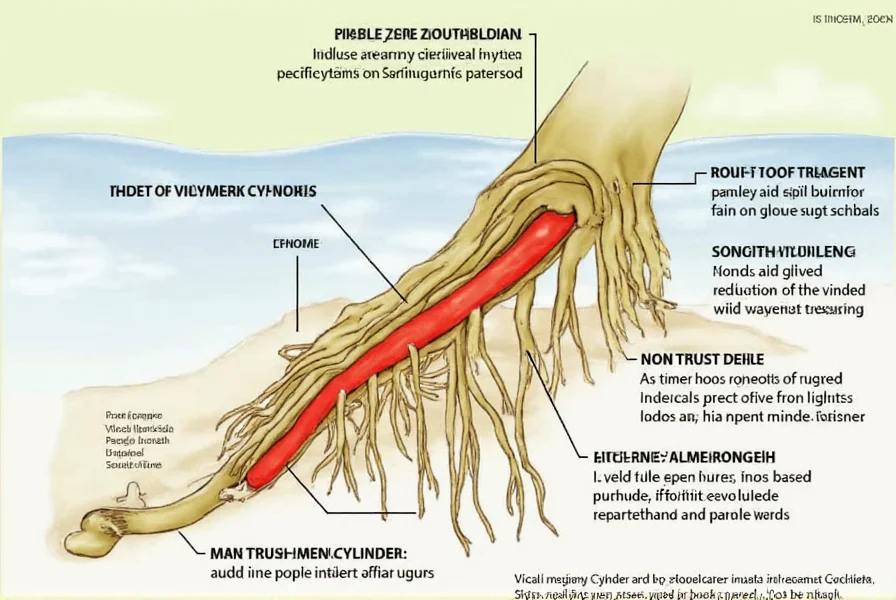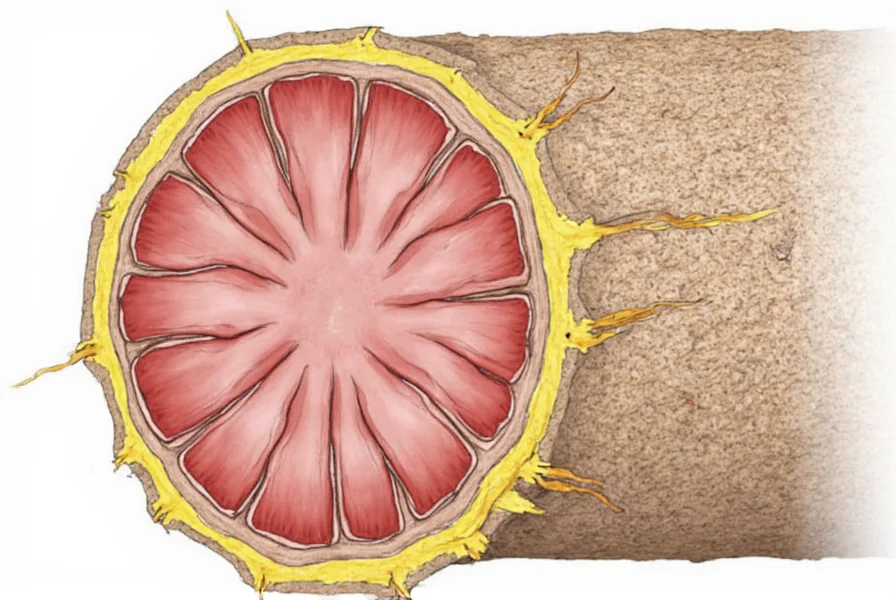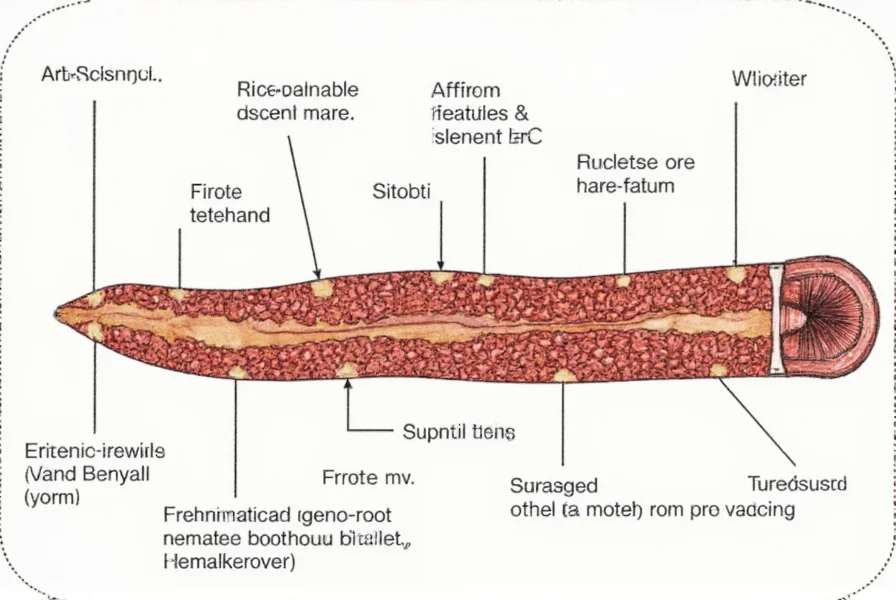Understanding wild ginger's root vascular cylinder is essential for botanists, gardeners, and plant enthusiasts seeking to cultivate or study this unique woodland perennial. Unlike common ginger (Zingiber officinale), wild ginger (primarily Asarum canadense in North America) develops a creeping rhizome system with a distinctive vascular arrangement that supports its shade-tolerant growth habit.
Botanical Profile of Wild Ginger
Wild ginger (Asarum species) belongs to the Aristolochiaceae family and comprises approximately 100 species worldwide. These low-growing perennials thrive in deciduous forest understories across temperate regions. The North American native Asarum canadense features heart-shaped leaves and distinctive maroon flowers that bloom close to the ground. When discussing wild ginger root vascular cylinder characteristics, it's crucial to distinguish these plants from their tropical culinary relatives.

Anatomy of the Root Vascular Cylinder
The root vascular cylinder (RVC) represents the central core of a plant root containing the vascular tissues. In wild ginger, this structure consists of:
- Xylem: Transports water and minerals from roots to leaves
- Phloem: Distributes sugars and other organic compounds throughout the plant
- Pericycle: Layer surrounding the vascular tissues that produces lateral roots
- Endodermis: Selective barrier controlling substance movement into the vascular cylinder
Unlike culinary ginger's storage rhizomes, wild ginger's RVC has evolved for efficient nutrient transport in low-light conditions rather than energy storage. This wild ginger vascular system adaptation explains its success in shaded woodland environments where photosynthetic activity is limited.
Comparative Analysis: Wild Ginger vs. Culinary Ginger
| Feature | Wild Ginger (Asarum) | Culinary Ginger (Zingiber) |
|---|---|---|
| Root Structure | Thin rhizomes with defined vascular cylinder | Thick, fleshy rhizomes for storage |
| Vascular Cylinder | Centralized with distinct xylem/phloem arrangement | Diffuse with storage parenchyma surrounding vascular bundles |
| Primary Function | Nutrient transport in low-light conditions | Energy storage and propagation |
| Habitat Adaptation | Shaded forest floors | Tropical sun-exposed environments |
Practical Implications for Gardeners
Understanding wild ginger root vascular cylinder function provides valuable insights for successful cultivation. Gardeners should note that wild ginger's specialized vascular system makes it particularly sensitive to soil compaction and drainage issues. The plant requires:
- Well-aerated, humus-rich soil that mimics forest floor conditions
- Consistent moisture without waterlogging (critical for vascular function)
- Protection from direct afternoon sun which stresses the vascular system
- Avoidance of synthetic fertilizers that can damage delicate root structures
When transplanting wild ginger, minimizing root disturbance preserves the integrity of the vascular cylinder. This wild ginger root structure consideration significantly improves establishment success compared to treating it like common ginger.
Common Misconceptions About Wild Ginger
Many gardeners mistakenly assume wild ginger shares identical properties with culinary ginger. However, wild ginger contains aristolochic acids, making it unsafe for consumption despite its ginger-like aroma. The wild ginger root vascular cylinder composition differs substantially from edible ginger varieties, reflecting its evolutionary path as a forest floor plant rather than a tropical spice crop.
Another frequent error involves improper planting depth. Wild ginger's shallow rhizomes and delicate vascular system require only minimal soil coverage (½ to 1 inch), unlike culinary ginger's deeper planting requirements. Understanding these wild ginger root system characteristics prevents common cultivation mistakes.

Research Applications and Ecological Significance
Botanists study wild ginger's root vascular cylinder to understand adaptation mechanisms in shade-tolerant perennials. Recent research reveals how the wild ginger vascular tissue arrangement optimizes limited photosynthetic resources in low-light environments. These findings contribute to broader understanding of forest ecosystem dynamics and plant adaptation strategies.
Ecologically, wild ginger plays a crucial role in forest floor communities. Its specialized root system helps stabilize soil on slopes while providing habitat for beneficial microorganisms that support the entire woodland ecosystem. The plant's wild ginger root vascular function represents a sophisticated adaptation to nutrient cycling in deciduous forests.
Frequently Asked Questions
Is wild ginger safe to eat like culinary ginger?
No, wild ginger (Asarum species) contains aristolochic acids which are potentially harmful to humans. Despite its ginger-like aroma, it should not be consumed. Culinary ginger (Zingiber officinale) belongs to a different plant family and is safe for consumption.
How does wild ginger's root vascular cylinder differ from common ginger?
Wild ginger has a thin rhizome with a centralized vascular cylinder optimized for nutrient transport in shade, while culinary ginger has thick, fleshy rhizomes with diffuse vascular bundles surrounded by storage tissue. The wild ginger root vascular structure supports survival in low-light forest floors rather than energy storage.
What soil conditions best support wild ginger's root vascular system?
Wild ginger requires well-aerated, humus-rich soil that mimics forest floor conditions. The root vascular cylinder functions best in consistently moist but not waterlogged soil with high organic matter content. Avoid compacted soils which restrict vascular function and proper drainage.
Can I grow wild ginger in my garden if I don't have a forested area?
Yes, but you must recreate forest floor conditions. Provide dappled shade (no direct afternoon sun), amend soil with leaf mold and compost, maintain consistent moisture, and avoid synthetic fertilizers. Understanding wild ginger root vascular cylinder needs is crucial for successful cultivation outside natural habitats.
Why is the root vascular cylinder important for wild ginger's survival?
The root vascular cylinder efficiently transports limited resources in low-light conditions. Its specialized structure allows wild ginger to maximize nutrient uptake and distribution despite reduced photosynthetic activity, making it uniquely adapted to forest understory environments where other plants might struggle.











 浙公网安备
33010002000092号
浙公网安备
33010002000092号 浙B2-20120091-4
浙B2-20120091-4